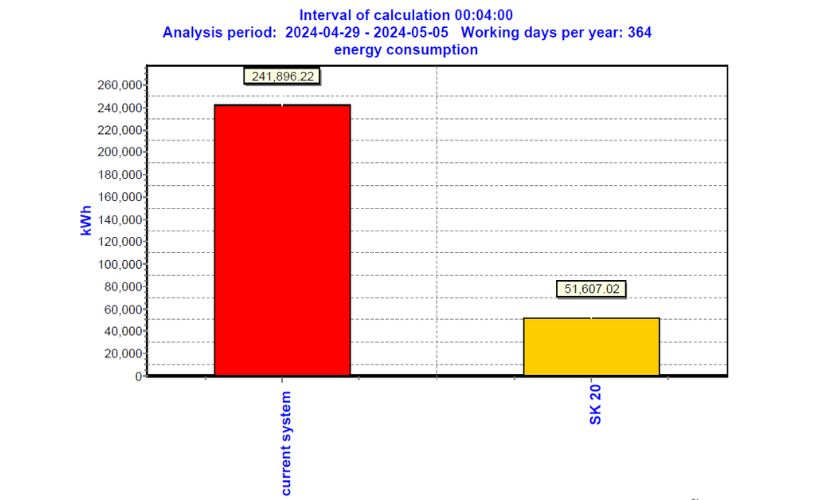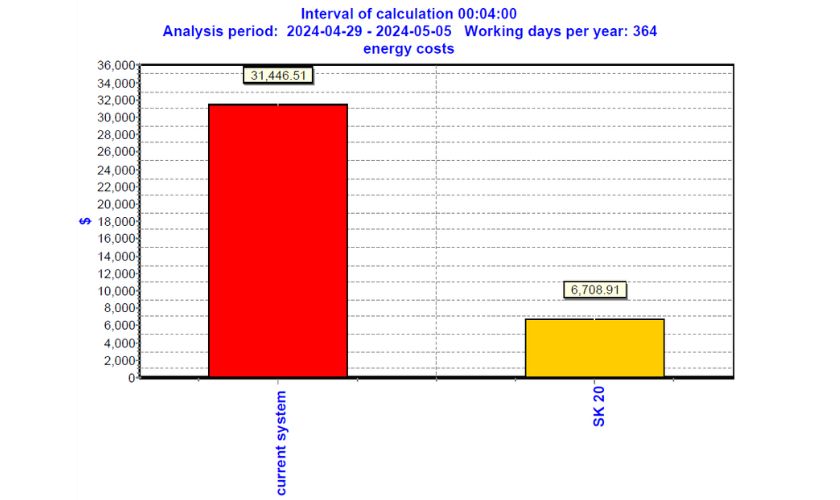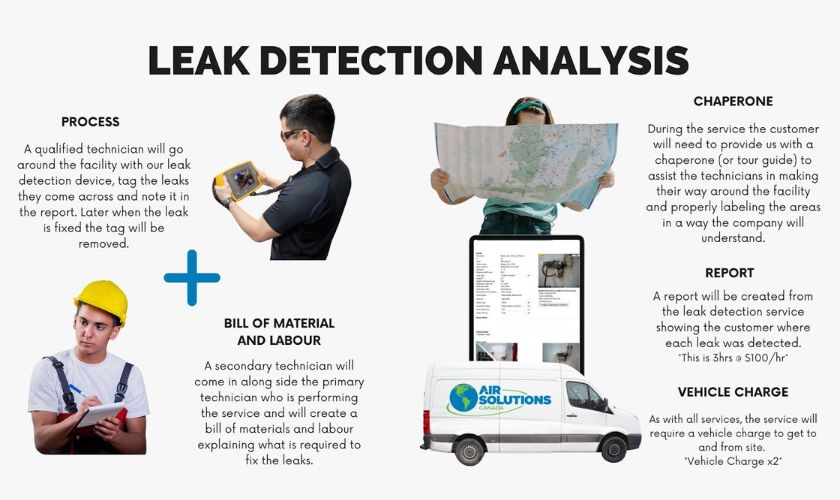How monitoring your air system can lead to huge savings
Key takeaways:
- Conducting an Air Demand Analysis (ADA) is crucial for optimizing your compressed air system.
- Identifying and repairing leaks can save up to 30% of compressed air.
- Switching to a properly sized compressor can significantly reduce energy costs.
- Financial incentives and rebates are available for businesses that reduce energy consumption.
- Regular monitoring and smart upgrades enhance operational efficiency and sustainability.
In industrial operations, the efficiency of your compressed air system plays a crucial role in maintaining productivity and managing costs. Understanding and optimizing this system can yield significant savings and improve overall performance. Inspired by real-world examples and expert advice, here’s a detailed guide on how to evaluate and enhance your compressed air system’s efficiency.
Understanding the basics of compressed air systems
Compressed air systems are integral to various industrial processes, providing the necessary power for tools, machinery, and other equipment. However, inefficiencies in these systems can lead to substantial energy waste and increased operational costs. To ensure your system is operating optimally, it is essential to measure its current performance and make data-driven improvements.
Learn more about the basics of compressed air systems.
Conducting an Air Demand Analysis (ADA)
The first step in optimizing your compressed air system is to conduct an Air Demand Analysis (ADA). This process involves shutting down each compressor for about 30 minutes and installing data loggers to measure key performance metrics such as kilowatt consumption, cubic feet per minute (CFM) of air produced, and system pressure. The data collected over a specified period provides a comprehensive view of the system’s efficiency and highlights areas for improvement.
Having conducted numerous ADAs over the years, I can attest to the value they bring in identifying hidden inefficiencies. One of my clients was able to reduce their energy consumption by 40% following a detailed ADA and subsequent system adjustments.
Step-by-step process of ADA
- Installation of data loggers: Technicians install data loggers on each compressor’s drive motor, inlet valve arrangement, and downstream pressure points.
- Data collection: Compressors are run continuously, even during non-production times, to identify leaks and inefficiencies.
- Analysis: Data is collected every four minutes over a period of nine days, providing detailed insights into the system’s performance.
- Reporting: A professional engineer analyzes the data and generates a detailed report outlining the system’s efficiency, potential improvements, and cost-saving opportunities.
Learn more about our Air Demand Analysis services here.
Real-world example: The Greater Toronto Hamilton area company
A notable example comes from a company in the Greater Toronto Hamilton area, which operated a 100hpr air compressor. Through an ADA, it was determined that their actual requirement was only a 20hp compressor. The oversized compressor was causing unnecessary energy consumption and increased costs. By switching to a smaller, modular compressor, the company could expand its capacity when needed without incurring excessive energy expenses.
In this case, the ADA revealed that the company was using four times more energy than necessary. The switch to a 20hp compressor resulted in substantial energy savings and a more efficient operation.
Our senior engineer shared a little joke about this project: "If I was able to take a percentage of every dollar that I showed a customer where they might save money, I would have retired 20 years ago, owned my own island, and fly there regularly in a private jet."

Identifying and repairing leaks
Experts estimate that up to 30% of compressed air in most facilities is lost through leaks. Identifying and repairing these leaks is one of the simplest yet most effective ways to improve system efficiency. During the ADA, technicians can pinpoint these leaks and recommend necessary repairs.
One of the most common issues we encounter is undetected leaks. In a recent project, identifying and repairing leaks saved a client over $10,000 annually in energy costs. It's amazing how something as small as a cracked hose can cost you so much. Finding these leaks is like finding hidden treasures—only these treasures stop you from hemorrhaging money.
Check out this comprehensive guide on leak detection and repair.
Leveraging rebates and incentives
In addition to optimizing your system’s efficiency, there are financial incentives available for businesses that reduce their energy consumption. For example, in Ontario, companies can apply for rebates of $1,200 for every kilowatt saved. This can significantly offset the costs of upgrading or retrofitting your compressed air system. We educate you on how you can reclaim some of the hard-earned taxes that you've paid, and assist you with the application process.
Find more information about Ontario energy rebates here.
Calculating potential savings
To illustrate the potential savings, consider the company mentioned earlier. They reduced their energy consumption from 54 kilowatts to 17 kilowatts, saving 37 kilowatts. With a rebate of $1,200 per kilowatt saved, they qualified for a substantial financial incentive. Additionally, their annual energy consumption dropped from 241,000 kilowatt-hours to 51,000 kilowatt-hours, translating to a cost reduction from $31,000 to $6,000 annually.
Below is an example calculation graph showing the potential savings:

Actionable steps for businesses
- Perform an Air Demand Analysis: Regularly conduct ADA to monitor and optimize your system’s performance.
- Repair Leaks Promptly: Identify and fix leaks to prevent energy waste.
- Upgrade Wisely: Consider modular compressor systems that can be expanded as needed, rather than overinvesting in oversized equipment.
- Utilize Incentives: Take advantage of available rebates and incentives to reduce upgrade costs.
Conclusion
Optimizing your compressed air system is not just about reducing energy costs; it’s about enhancing overall operational efficiency and sustainability. By following these steps and learning from real-world examples, businesses can achieve significant savings and improve their environmental footprint. Regular monitoring, timely repairs, and smart upgrades are key to maintaining a cost-effective and efficient compressed air system.


